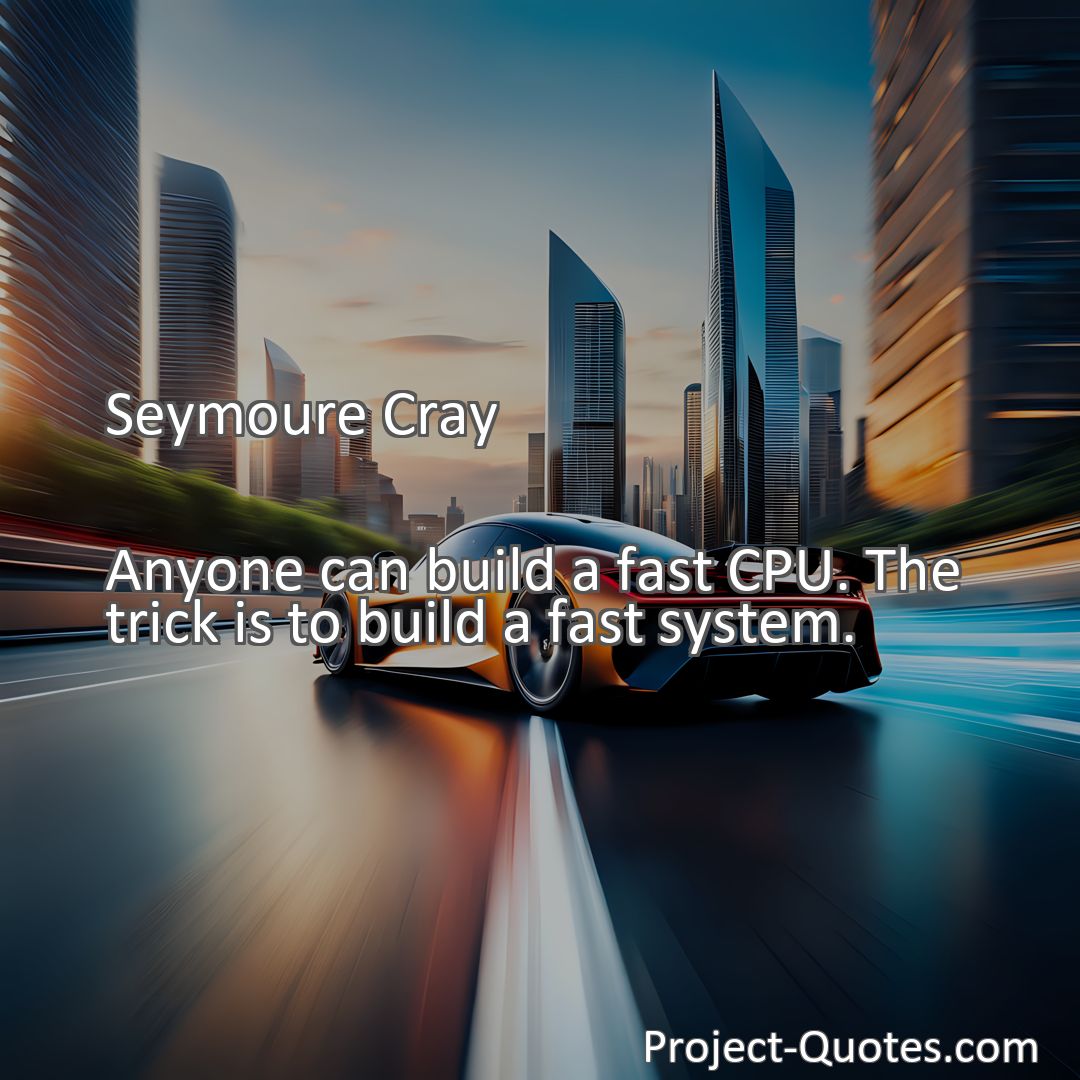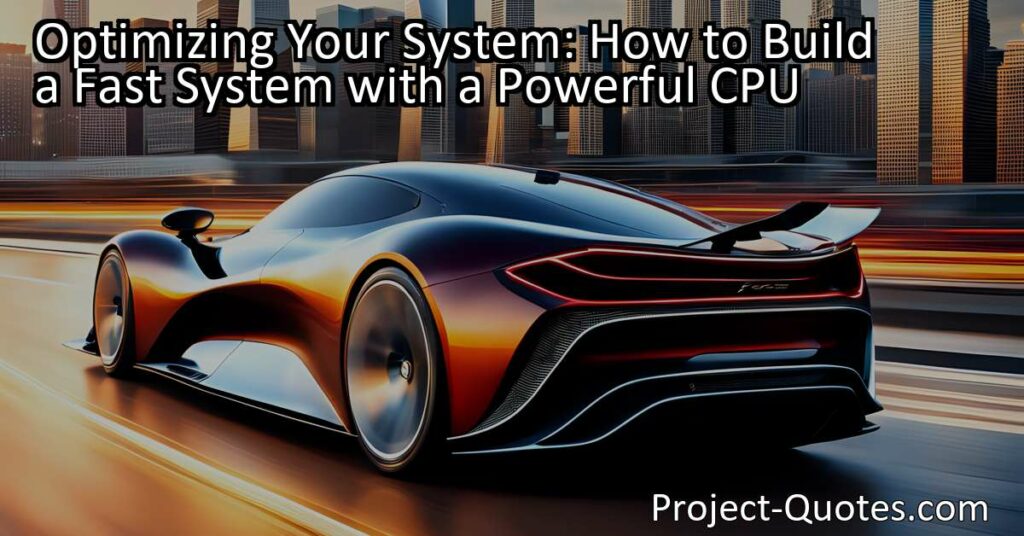Anyone can build a fast CPU. The trick is to build a fast system.
Seymoure Cray
Optimizing Your System: How to Build a Fast System with a Powerful CPU To build a truly fast system, it’s important to go beyond just having a fast CPU. This article explores the synergy between various components, the efficiency of software, architectural design, and effective cooling and power management. By understanding these interdependencies and making informed decisions, one can achieve a balanced, high-performance system that meets the demands of our fast-paced technological world.
Table of Contents
Meaning of Quote – Anyone can build a fast CPU. The trick is to build a fast system.
In today’s fast-paced technological world, the demand for speed seems to be ever-increasing. Whether it’s our phones, computers, or internet connections, we all strive for the fastest and most efficient devices. However, as the provided quote suggests, simply having a fast central processing unit (CPU) is not enough to create a fast system. Building a holistic, well-designed system is the key to achieving optimal speed and performance. Let’s dive deeper into this idea and explore how various components and considerations come together to create a truly fast system.
To understand the concept of building a fast system, it’s crucial to grasp the role of a CPU. The CPU acts as the brain of a computer, executing instructions and coordinating communication between different hardware components. While a fast CPU is undoubtedly important, it is just one piece of the puzzle. A speedy system requires a harmonious blend of various components, including the CPU, memory (RAM), storage, motherboard, and graphics card, all working together seamlessly.
When it comes to building a fast system, one must consider the synergy between these components. For instance, pairing a powerful CPU with sufficient RAM ensures smooth multitasking and quick response times. As each component complements the other, the system as a whole can function optimally. This idea applies not only to desktop computers but also to other devices, such as smartphones and tablets.
Beyond hardware, software optimization is also crucial for achieving a fast system. Developers play a crucial role in writing efficient code and optimizing software to take advantage of the underlying hardware capabilities. A poorly designed software application can bottleneck the performance of even the fastest CPU, resulting in a sluggish user experience. Therefore, a fast system requires a thoughtful collaboration between hardware manufacturers, software developers, and end-users.
In addition to hardware and software considerations, the architecture of a system plays a vital role in its speed. The design of a system can facilitate or impede information flow, affecting overall performance. Efficient data transfer within a system, as well as between the system and external devices, is key to achieving speed. Ensuring that the motherboard has ample ports for connectivity, selecting the right storage options with high data transfer rates (such as solid-state drives), and utilizing high-bandwidth buses all contribute to a fast architecture.
Moreover, cooling and power management are often overlooked aspects of building a fast system. A powerful CPU and graphics card generate substantial heat and require effective cooling mechanisms. Overheating can lead to thermal throttling, where the system automatically reduces performance to prevent damage. By investing in effective cooling solutions like heatsinks, fans, or liquid cooling systems, one can maintain optimal performance and system longevity.
Furthermore, power management is essential for maintaining efficiency and maximizing system speed. Energy-efficient components and power-saving settings contribute to a fast system by minimizing power consumption and reducing heat generation. Advanced power management options, such as intelligent sleep modes and dynamic voltage scaling, can ensure power efficiency without compromising performance, allowing the system to transition quickly between low-power states and full operation.
However, it’s crucial not to equate speed solely with high clock frequencies or raw processing power. While these factors are significant, they do not always translate to a fast system. Optimization, compatibility, and reliability are equally important aspects. A thorough understanding of the system’s requirements, along with selecting components that work together seamlessly, is crucial for achieving a balanced, high-performance system.
In conclusion, the quote “Anyone can build a fast CPU. The trick is to build a fast system” emphasizes the importance of looking beyond individual hardware components to create a truly fast system. Achieving speed and optimal performance requires a holistic approach that considers the synergy between various components, the efficiency of software, the architectural design, and effective cooling and power management. By understanding these interdependencies and making informed decisions, one can build a fast system that meets the demands of our ever-evolving technological world.
I hope this quote inspired image brings you hope and peace. Share it with someone who needs it today!


